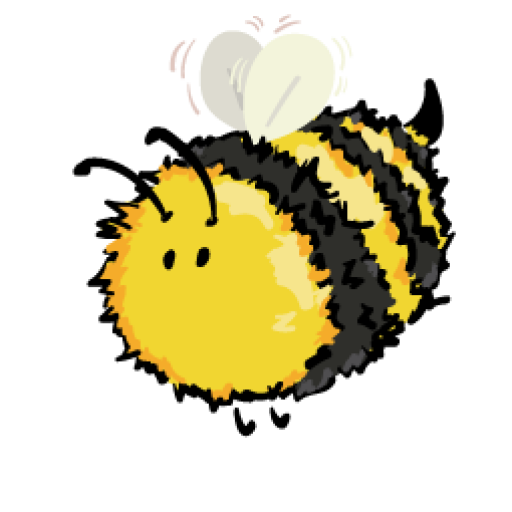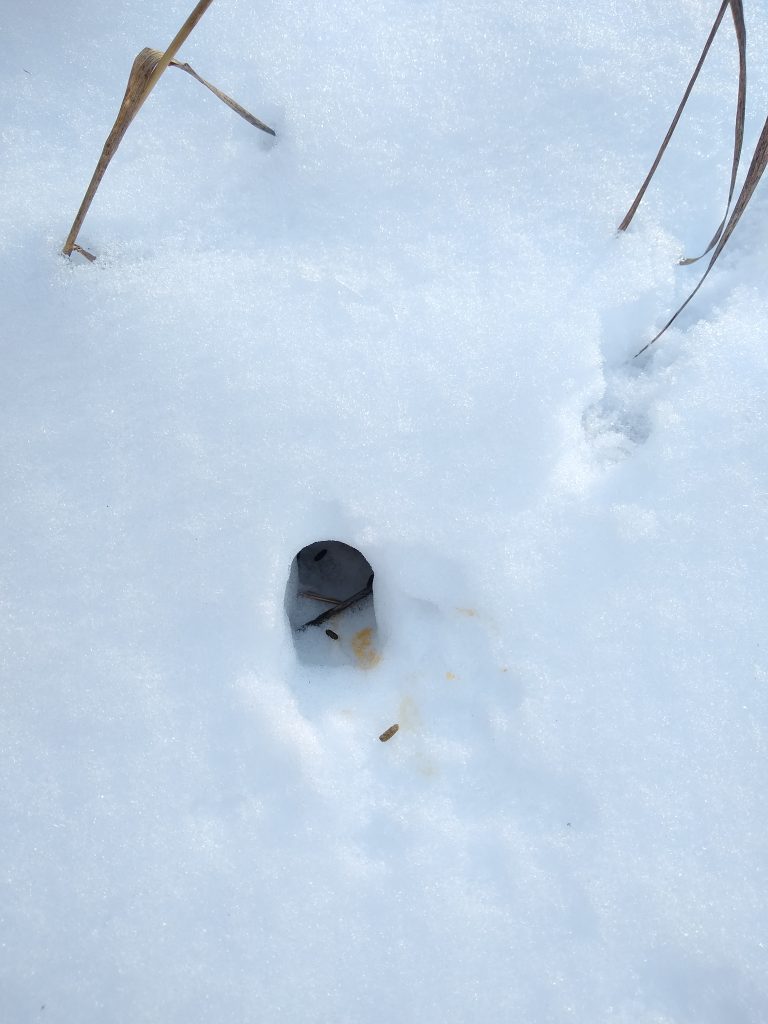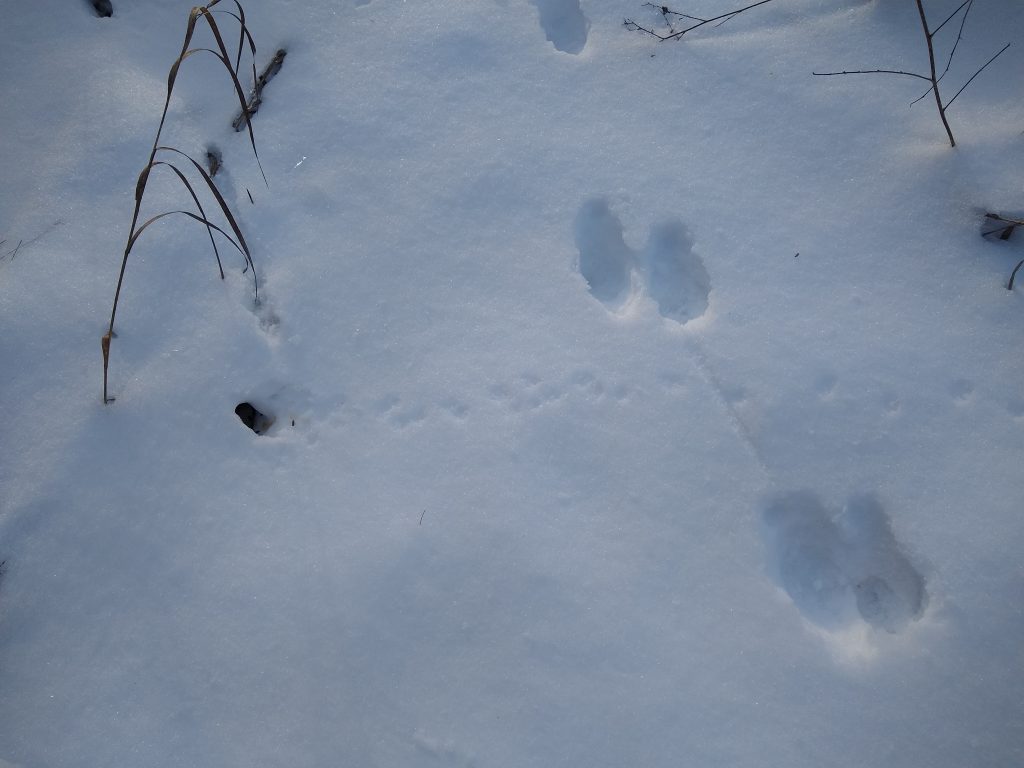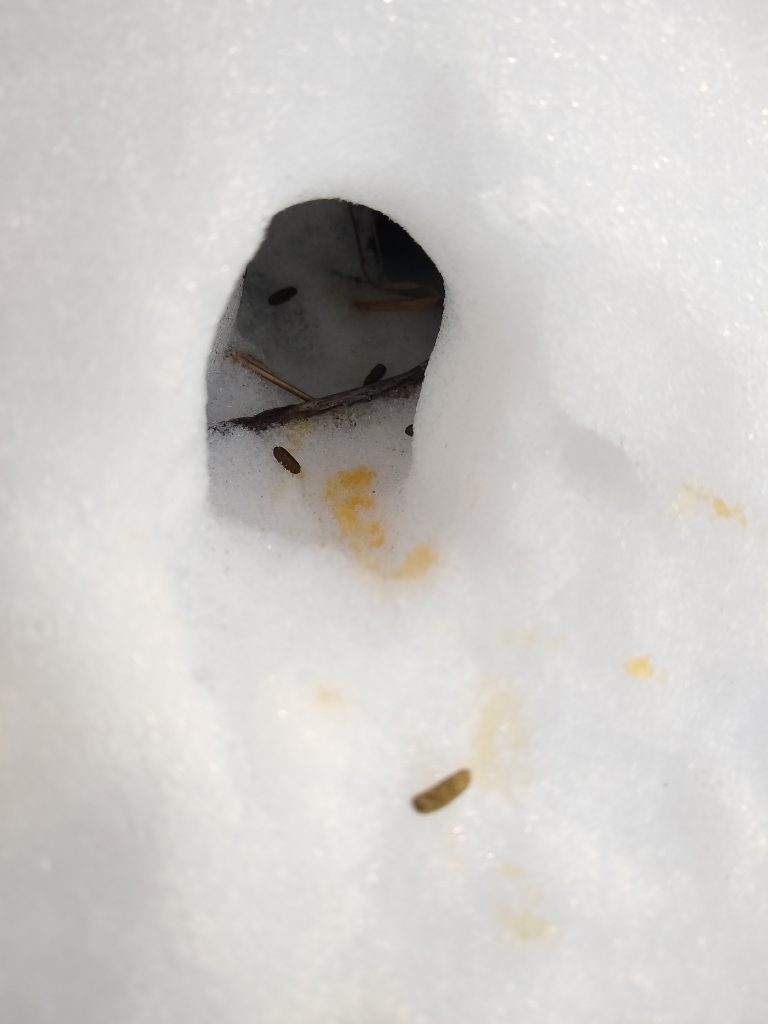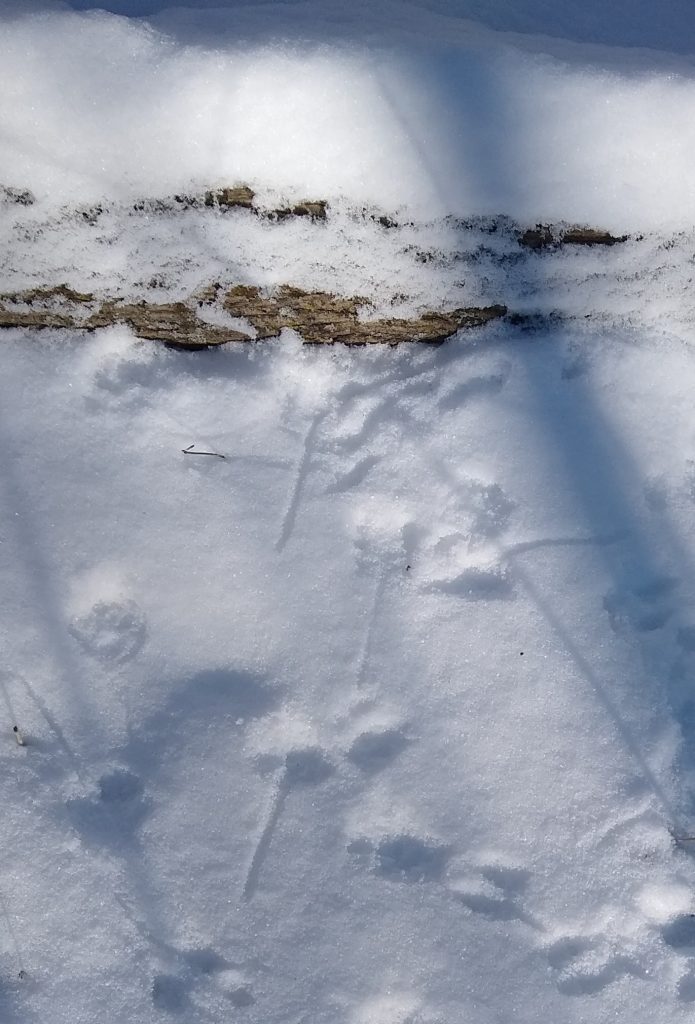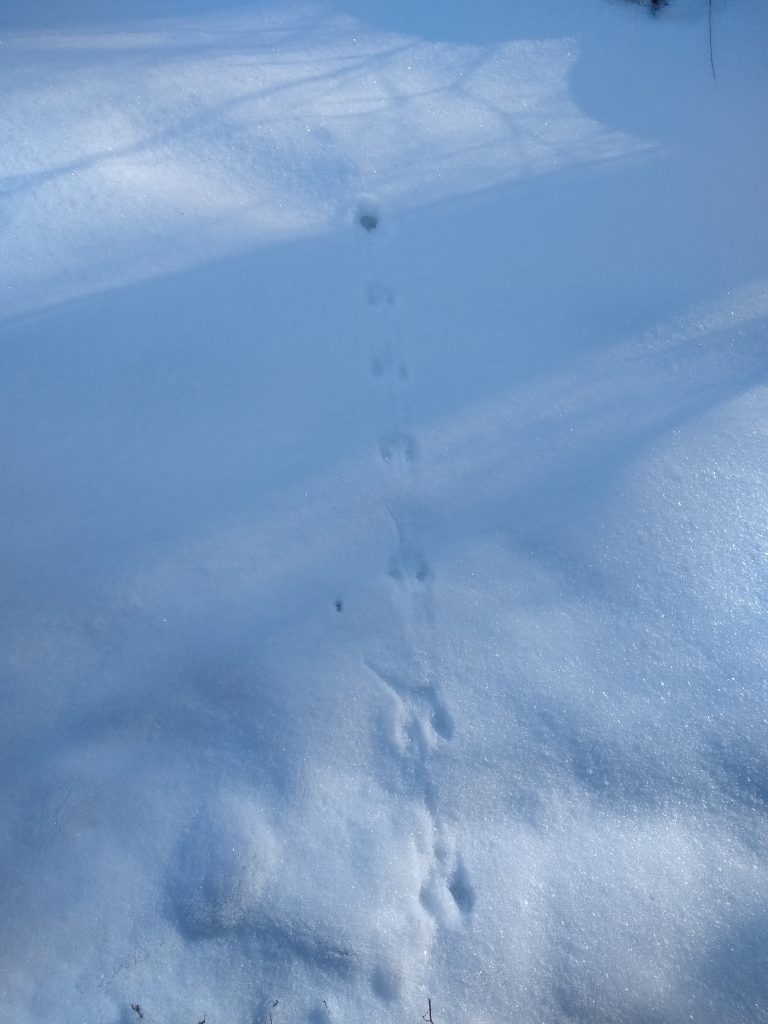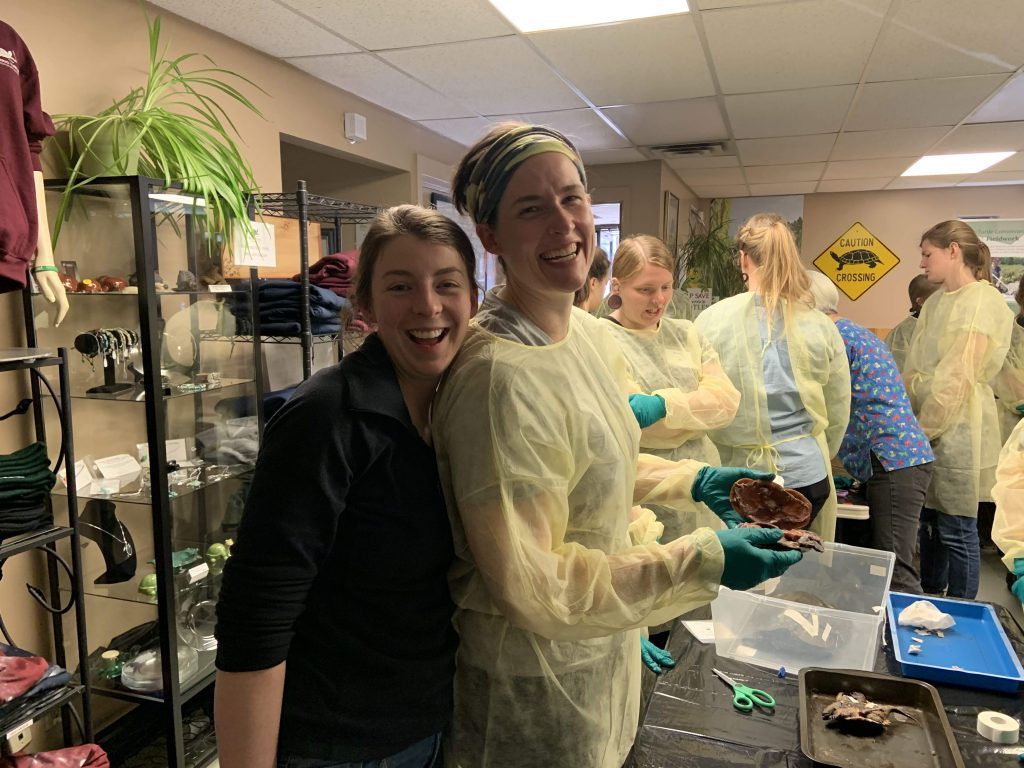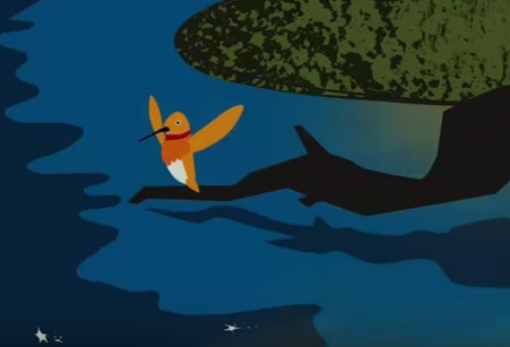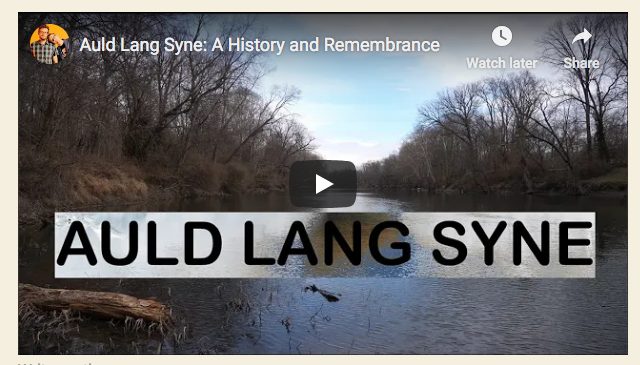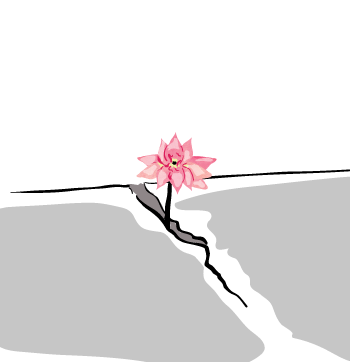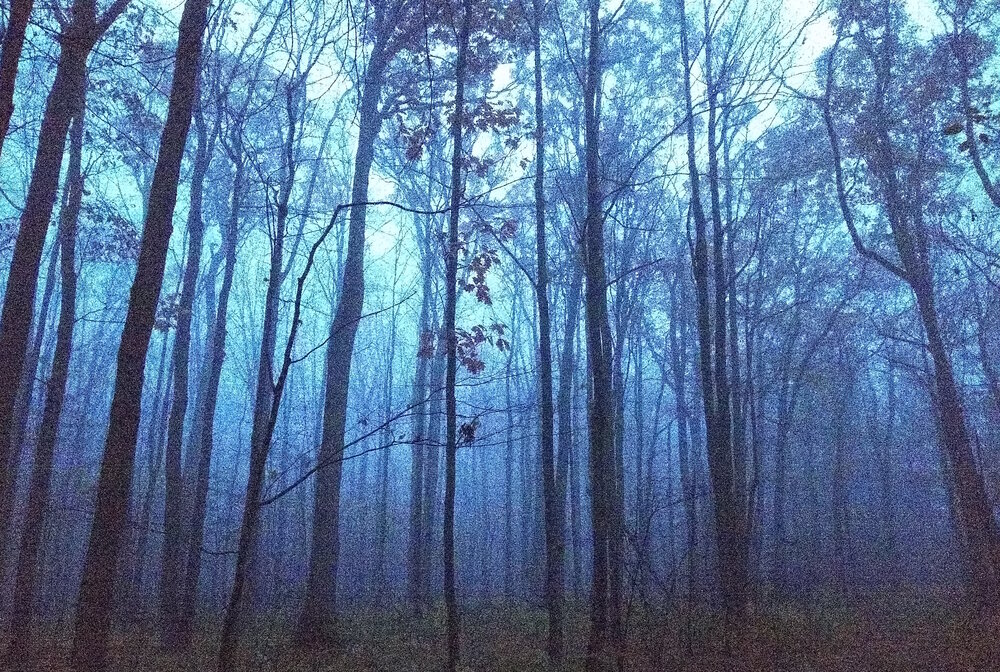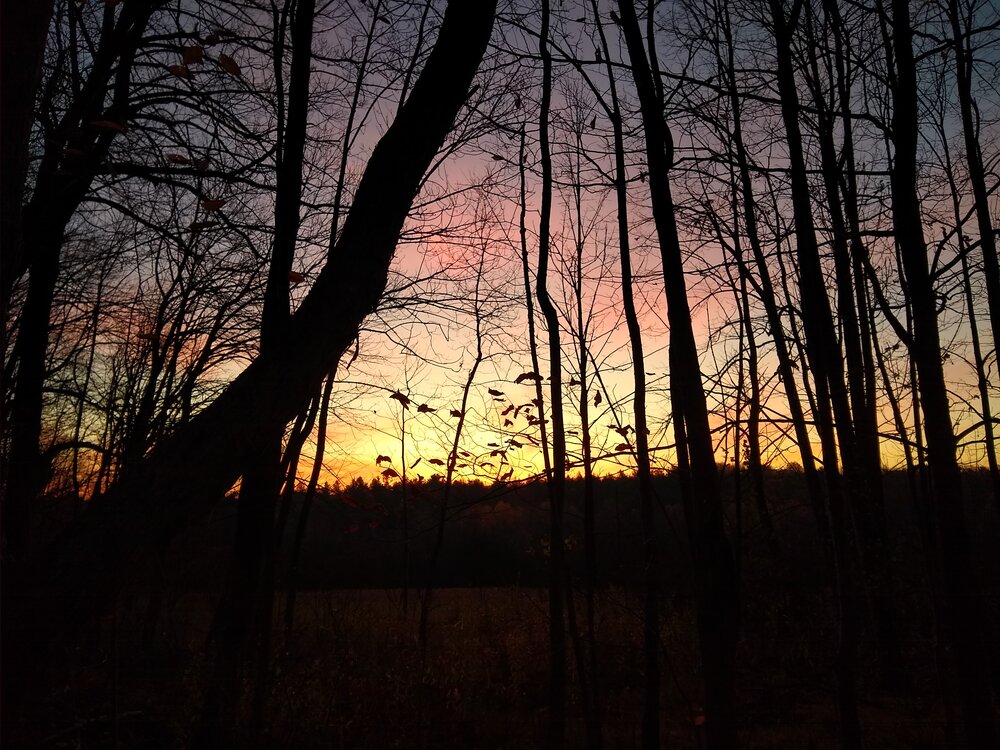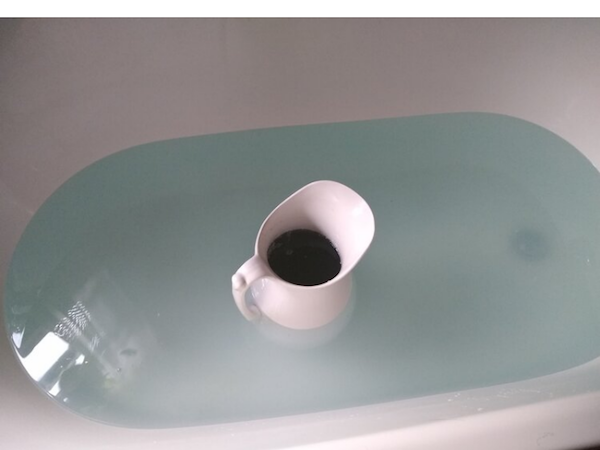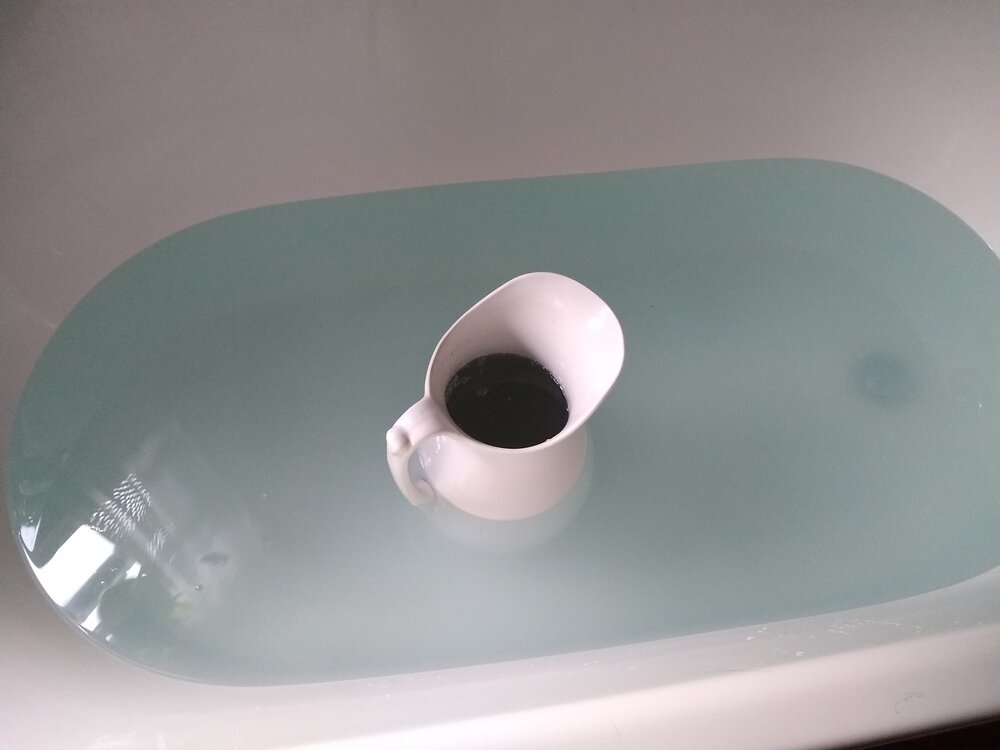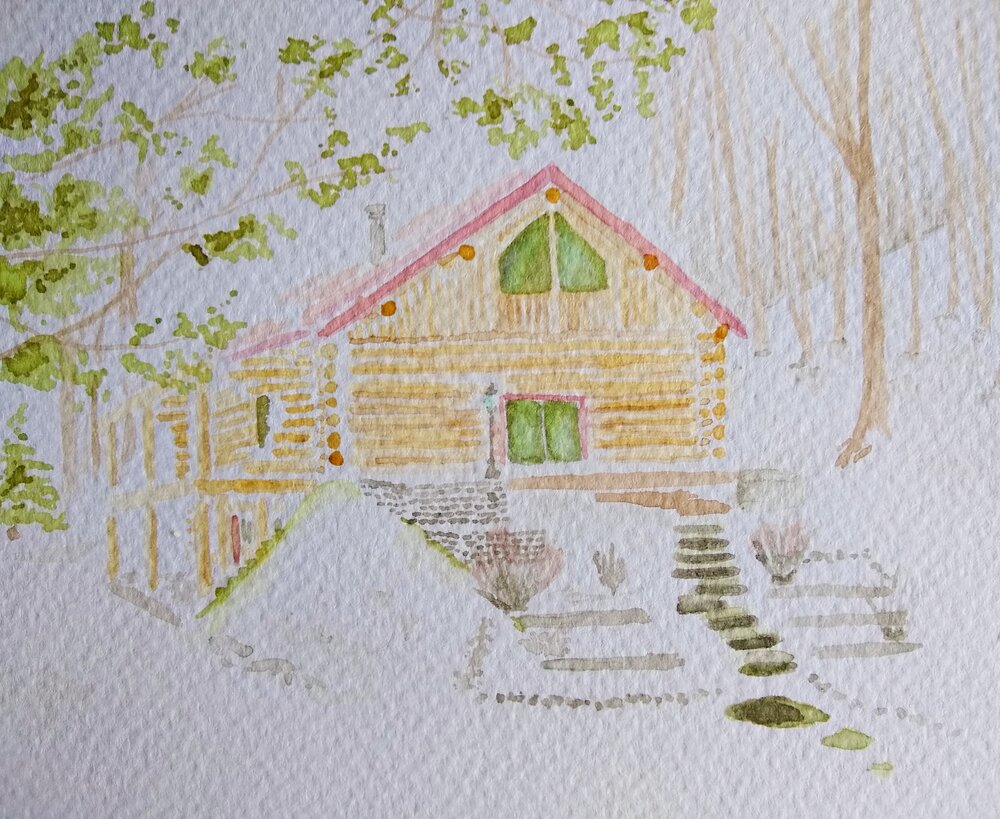
Home, painted with homemade inks.
Folks understood the value of our small Toronto condo, but they didn’t seem to understand the value of a little log house in 25 acres of forest. We were asked over and over, “But what will you do with 25 acres of woods?” Our answer was if we did nothing except keep it as woods, we’d be doing a great job. And whether others could see the value of this place or not, it’s proven to be even more priceless than we’d imagined.
After moving to Stockdale, my husband Neil and I — Hi! I’m Kate — co-founded this company, Maker’s Dozen: an independent Canadian maker studio and experimental workshop. We wanted to become more direct participants in the maker movement. Our official motto is “Try. Learn. Share. Repeat.” Though the unofficial one is probably “make everything”.
We’re exploring our potential not to rely on a single product or skill, but seeing if a diversity of activities can make us resilient. There is Irish in my ancestry, and perhaps fear of relying too heavily on a single crop runs deep in my potato-farming DNA.
We moved here because we were looking to leave Toronto. Our West Queen West neighbourhood had become far cooler than we are, and the diversity, small independent shops, and strong sense of community — between retired people, new immigrants, singles, young couples, and middle-aged families — was quickly being replaced by a 20 and 30-something homogeneity — and bars on bars on bars. We’re both well past our drinking-is-fun age, and well into our “maybe we should brew our own beer” years. Both of us have always loved and sought out green spaces. In part we lived in Toronto deliberately to try and keep our footprint on the planet small and light. But it was time to make a greener place our home. More trees please.
The people of Toronto are pushed to connect with nature by “escaping” the city. City-locked folks feel the deficit of nature in their everyday lives, sometimes acutely. I love Toronto, and you will not find me badmouthing urban living. There are solid arguments for density and urbanity on an overburdened planet. But Toronto lags behind in some important life support infrastructure.
Toronto does not have enough nature. There are green spaces, but they remain disconnected, and they are not expanding at anywhere close to the rate needed to support the evergrowing population. Tall towers are built, but instead of building the green-frastructure needed to support healthy urban life, developers pay fees and barter — and opportunities to connect with wildlife and green in Toronto stagnates. The few new “parks” that appear are concrete voids with a few sickly trees mounted on unreachable plinths. Like the last few wild creatures trapped in zoos.
I believe in an “us”, but not a “them”. We learn by sharing, exchanging, and growing. Exchanging knowledge, experiences and innovations makes everyone richer. The city needs the support of the country to understand, appreciate, and feel included in nature. The country needs the city to want to make good decisions to protect resources that cannot be recreated. It is much easier to devastate and exploit a planet if you are disconnected from it. We don’t want to leave the city and the folks who live there behind. We want to build bridges, reconnecting the best of urban and rural life, ideas, and innovations.
Very shortly after we moved here, we had easily a half-dozen requests from friends not-jokingly asking if they and their kids could come to nature camp at Auntie Kate and Uncle Neil’s. Many parents are now one or two or more generations away from a family farm or cottage — who do not have woods to go to, but who of course still crave that connection.
One of my favourite moments was when one of our young visitors, a little girl named Piper, opened her eyes on a sap collecting day and the first thing she said was “we better get going, we have a lot of work to do!”. Kids crave messy muddy nature absolutely, though adults do as well; adults also want to fill their ears with the melodies of spring peepers, great horned owls and birdsong. To learn new sights, sounds, and skills.
From ‘The Hybrid Mind’:
“I once met a man who trained young people to become cruise ship pilots. He said he encountered two kinds of students. One kind grew up mainly indoors, spending hours playing video games and working on computers. These students were quick to learn the ship’s electronics, a useful talent, the instructor explained. The other kind of student grew up spending a lot of time outdoors often in nature. They, too, had a necessary talent. ‘They actually know where the ship is.’
He wasn’t being cute. To him, the ultimate student would be one with both sets of abilities, abilities that come from both virtual and natural experience. “We need people who have both ways of knowing the world,” he added.”
We’re in love with our woods, and relish each season we get to observe. We are constantly learning something new. Where do the bloodroot, wild geraniums, and mayapples grow thickest. What does a germinating acorn look like. Where do the flying squirrels nest? Where do the glow-in-the-dark mushrooms grow?
So much life calls our woods home, or at least passes through — deer, coyote, owls, mustelids, porcupine, rabbits, raccoons, fox. Chipmunks, squirrels, luna moths, millipedes, milk snakes, nightcrawlers, grouse. Pileated woodpeckers. Woodcocks, flickers, oven birds, brown creepers. Fireflies. I spend the snowier winters and muddier springs following tracks and scat, and setting up our trail camera to photograph the animals. We share what we find, and what it taught us — what does scat tell you about the nature of an animal, what do tracks say about what it was up to. What stories can we read in the snow.
We focus on the health of our mast trees, aware that the food they create supports a diversity of wildlife. Early spring food sources like poplar and sumac that benefit birds and mammals, but also bees. We limit our trail networks to preserve as large a forest interior as we can manage, and are rewarded with seeing baby fawn. I volunteer at Sandy Pines Wildlife Rescue Centre in Napanee, and the health and safety of our forest means we’ve already been able to use it as a reintroduction site for rescued wildlife, ready to return to the wild.
Our most important objective here is ensuring the health of our woods extends well beyond our time with it — that our woods will have the chance to be a healthy habitat and ecosystem that outlives us, hopefully by a good long while.
Finding the balance between our digital work, crafts, workshops, forage, and education all connected back to our studios and woods is work in progress and something we’ll probably be figuring out for… oh, a few more decades. But it’s deeply fulfilling, and these woods are the place we always most want to be. We got here later than we might have liked, but just in time to spend the rest of our lives here.
“I spent the summer traveling. I got halfway across my backyard” – Louis Agassiz, Swiss Naturalist
